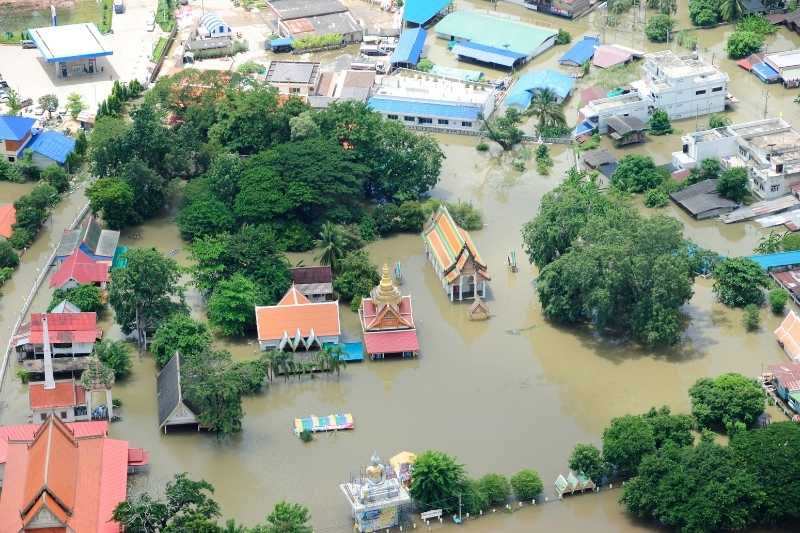Summary
This article discusses how donations can become a whole new problem after natural disasters strike and what can be done about it.
Definition of “The Disaster AFTER the Disaster”
Natural disasters are bad enough on their own, but something happens post-disaster that makes it worse. Among nonprofit and government-sponsored relief organizations, it’s infamously referred to as “the disaster AFTER the disaster.” It’s the donations. That is, the disaster after the disaster is the overwhelming influx of food, clothes, toiletries, medicines, medical supplies, toys, and not surprisingly, countless unmarked boxes of unknown items inside. People want to help. Unfortunately, having more supplies than volunteers can handle turns out to be a serious burden in an already uphill battle of recovering from disaster. The surplus becomes the second disaster. Incidentally, many nonprofit disaster relief organizations also accept financial donations (and even prefer it over sending random supplies to them).
That’s not to say donations themselves are bad. It’s the compassion of people on full display. These donations are a testament to humankind’s loving kindness toward one another. People sympathize, empathize, and are mobilized on behalf of victims of hurricanes, tornadoes, tsunamis, floods, fires, and a slew of other disasters that ransack the lives of innocents. And of course, the most recent has been the COVID-19 pandemic, which has been globally devastating. Thank God for people willing to help by donating their time, money, and possessions. This would seem quite the opposite of a problem. Indeed, the strength and hope this reveals are perhaps one of the only victories we salvage out of tragedies in which, sadly, buildings, homes, and even people’s lives could not be saved. The world grieves with those who suffer.
Details and Examples
Nonetheless, donations can be in themselves another disaster on people’s hands. How can this be? It becomes a mess too big to organize and sort through. The distribution chain becomes completely clogged. Warehouses, if they are available to begin with, become cluttered with large piles and boxes. Donations spill into parking lots. Tarmacs become so full of donations that it impedes airport functionality. It’s often the case that following a disaster, there’s too many donations sent in, they’re not exactly what’s needed, or they’re sent to the wrong places.
Much of the donations are unsolicited in the first place. And there’s simply not enough storage space or manpower to deal with it. For example, after the earthquakes and a tsunami in 2010-2011, authorities in Haiti and Japan reported that only about 10% of the donations fulfilled the urgent needs. Not to mention, after a natural disaster, the supplies needed could change from one day to the next.
In another example, Hurricane Harvey in 2017 left in its wake leftover donations. Afterwards, materials worth tens of thousands of dollars were eventually auctioned off for pennies on the dollar. That did not include the 40,000 belts that were donated. One place reported that many pallets of people’s old clothes, kid toys, car seats, and other such used goods were donated by people.
It’s a nightmare for towns to deal with. Mounds of food and clothing are left in the elements to mold and rot, eventually needing to be hauled to landfills. Countless medicine bottles are disposed of almost as soon as they arrive at the disaster scene. Who is supposed to sort through all of it?
Here’s a quick scenario that illustrates the difficulty of dispensing even the supplies that are needed: Let’s say a person can get everything they need to furnish their house but they still don’t have a new house. Volunteers have to move and store the furnishings.
But let’s look as something simple. Flashlights. It’s a sure bet that people could use flashlights, right? Fair enough. Let’s play it out. If, say, 10,000 flashlights are donated to disaster relief after a flood, then the lights will need batteries. Let’s say that 500,000 batteries were also sent in from people all around the world. The question becomes this: who is going to put all those batteries in all those flashlights? And will this be the same person who is going to deliver these flashlights to the victims of the disaster? Clearly, donations can be a double-edged sword. You could call it a chaos of stuff. Ground zeroes are born without storage areas.
Solutions
Can anything be done to better handle donations? Disaster relief requires a way to organize and dispense donations. There has to be a way to manage the inventory. Inventory management software can drastically improve the situation. Flowtrac’s emergency inventory solutions give humanitarian organizations and disaster relief organizations a way to receive, store, and distribute the endless donations. It uses a cloud-based program paired with a mobile device app to deliver a quick way to scan barcodes, create requests for items, and report on the quantities of donations, the type of product, as well as the overall movement of all donations.
To aid in this “disaster after the disaster,” Flowtrac provides inventory management software.
